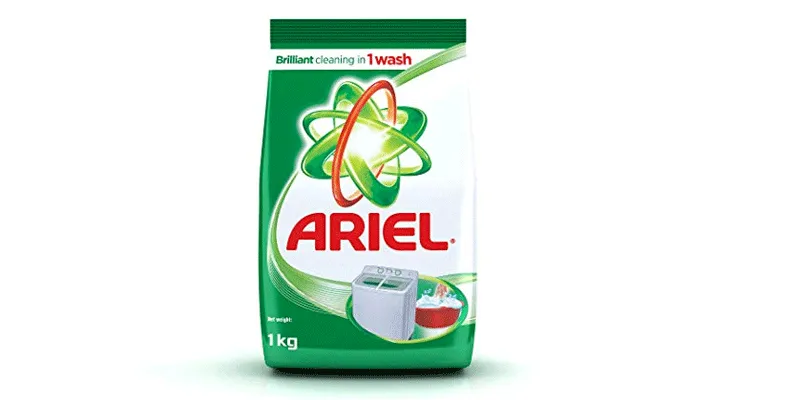Let's understand the power of branding
One of the biggest myths of entrepreneurship is that you have to worry about branding only after your company gains renown. The truth is that you have to worry about branding from the minute you start ideating on your product. Here’s how you can create a unique brand for your company…
I walk into my neighbourhood store to buy basmati rice. I ask for Daawat Rozana Gold. The store does not have it. The store keeper gives me multiple options, other brands, even Daawat, only not Daawat Rozana Gold. I say no, and walk out of the store.
The next nearest store is a fifteen minute walk. The weather is pleasant. But I’m in home clothes and slippers. Do I really want to walk like this? Why not just buy whatever the store has, for now? Basmati is basmati after all. And I can even buy Daawat. Only not Daawat Rozana Gold.
The interesting thing is that this conversation in my head does not even happen. There is no dilemma. I am not at crossroads. My mind is very clear. I want Daawat Rozana Gold Basmati rice.
And if my neighbourhood store does not stock it, I will go to any other store which does. Even if that means I have a fifteen minute walk. And if push comes to shove, today I will go without rice but I will not buy any other basmati rice. For me, rice is basmati. And basmati is Daawat Rozana Gold.

When a customer asks for your product by name, it has become a brand
Branding is as branding does
Have I tried other brands? No. I don’t need to. I am emotionally invested in Daawat Rozana Gold. And I will not be a brand slut and settle for whatever comes my way.
There is no right or wrong in this decision. It is my brand. My emotion. My purchase decision.
That is the power of branding. It is not the entrepreneur who makes his product into the brand. A product is simply a product till a customer behaves like I did. When a customer asks for your product by name and will not settle for any other does your product become a brand.
That is your moment of truth. And that is the reason you became an entrepreneur.
The ninth building block
Today we will address the ninth building block in our Buddha series, branding. It is exactly as the dictionary meaning suggests: making a mark on your product to claim it as yours.
Except that in the market place, you may mark your product to claim ownership, but your ownership is meaningless unless the customer claims usership!
One of the biggest myths of entrepreneurship is that you have to worry about branding only after the company becomes big. The truth is that you have to worry about branding from the minute you start ideating on your product. Because branding is not simply an exercise of printing your name on the package. It is a composite exercise of persona creation. So you need to do deep dive into every aspect of this. The brand name (should be easy to remember and easily roll off the tongue); the positioning (is it a Maruti 800 or a Ferrari?); the colours (don’t go trigger happy, choose solids which will remain consistent in print); and collaterals (logo, tag line, web, app, brochure, posters, social media).

Make sure your brand reflects your values
But remember, as an entrepreneur, you are your brand’s biggest brand ambassador and whatever are the values that your brand projects should be projected by you as well. If there is inconsistency, your brand persona will take a hit.
FMCG companies have refined branding to a science. P&G for example takes no chances when it comes to getting their brand positioning and communication right. Let us say, they plan to launch a premium shampoo.
In order to make the brand discussion real, they make a cardboard cut-out of their potential customer, even give her a name, say JoAnna, dress her up exactly as JoAnna, their customer would, and she sits right there, very much a part of the team. Sometimes, she is asked for her opinion; at other times, she is asked to suggest other options. This is ventriloquism at its marketing best!
Once the persona of the brand is entrenched in the minds of the customer, entrepreneurs cannot tamper with it.
Britannia for instance has a tag line: eat healthy, think better. At some point, the product development team came up with the idea of launching desi snacks such as bhujiya, paapdi and the like. Britannia’s marketing agency vociferously vetoed it on the ground that such products don’t align with the tagline of eat healthy, think better and would therefore damage Brand Britannia!
Let’s understand how branding works within the four truths of the Buddhist doctrine using the case of the launch of a detergent called Ariel by P&G in Mexico. Ariel detergent was launched in Europe in 1967 as an innovative product that combined enzymes and encapsulated bleach to make their customers’ whites look whiter. It was hugely successful in the markets that they launched and it spurred them to take it to Mexico as well.
What is the pain point Ariel tried to address?

Ariel promised clean clothes with minimal amount of detergent
Money was in short supply and the women in Mexico had to balance their home budget spending every penny wisely. At the same time, in Mexican society, a woman’s stature depended on how cleanly dressed she and her family members were. She could not obviously afford an extensive wardrobe, therefore it was imperative that her choice of detergent suited both her pocket as well as her stature. Ariel was launched exactly to address this.
What was the origin or source of pain?
The economy was struggling. The people were working class. They had no money for fancy tails but the social diktat was that when you stepped out of the house, the family were dressed in clean, ironed clothes, never mind if that was the only good pair they had. Which meant a lot of pressure on choosing the right detergent.
How did Ariel put an end to this pain?
Ariel’s brand communication was simple and directly addressed the pain point. They said, although the upfront cost of Ariel is more than the other detergent present in the market, in using Ariel you actually end up saving money because, while you need to use several spoonful of other detergents to get your clothes clean, you just need a pinch of Ariel to remove the stains and make your clothes look as good as new. And what’s more, Ariel’s technology is such that it does not damage your clothes at all. In the process your clothes last longer, look new for longer periods of time and therefore results in huge savings!
What did Ariel do to help their customers avoid pain?
Ariel incorporated all of these messages into their communication. They knew it would be hard to break the price barrier as it was significantly higher priced than other detergents. So they had to weave their value proposition in such a fashion that they could demonstrate savings in the long run and how it enhanced the social image of the women and their families. Ariel used every medium and every opportunity to communicate this message to the women.
So was Ariel’s launch in Mexico successful? Did customers throng to the stores to buy Ariel? Did the women stop buying all other detergents? The interesting answer is no! Ariel which up until then had been hugely successful in all the markets that it had been launched in, bombed in Mexico!
Let’s try to understand why - within the eight guiding posts of the Buddhist doctrine.
Right view isn’t completely right when critical details are left to assumption. This is what the Ariel marketing team realized in hindsight. Ariel Ultra, as it was launched in Mexico, was concentrated so that women needed to use only a fraction per load (as compared to other detergents). Lower-income households were short of storage space, and what could be better than a smaller amount of detergent delivering the punch of better cleaning through their enzymes?
Turns out they failed to view a couple of blind spots. Mexican women just did not believe that so little could do so much. And wait, it did not foam too – so how could their sweat be rubbed off their clothes? No chance, the women said emphatically, this is not right thinking at all!
"We were pretty ignorant about them in a deep way…we had to get out of our offices and become immersed in the real world and daily routines of lower-income consumers and in the stores of the retailers we partner with.” Acknowledging the absence of the right view and right thinking, brought out the right speech from the Vice President of P&G Mexico and Central America.
It was this realization that led P&G to the right action soon after. They created two initiatives.
‘Living It’ involved employees to live with lower-income consumers – and go along with them on their shopping trips. ‘Working It’ had their employees working behind the counter of small shops. Together, it gave them insights into why consumer did or did not buy products, and how the retailer responds to his customers’ preferences in terms of stocking.
And thus P&G made their business one of right livelihood - especially in the way they handled the branding of Downy Single Rinse that came after the lessons of Ariel. ‘Living it’ taught them the ground reality of the acute water problem in rural Mexico - women would lug buckets of water from wells and communal pumps situated away from their homes. This made laundry an extremely dreary chore as it involved six trips to the well or the communal water pump if they had to use a fabric softener! Wash, rinse, rinse again, add softener, rinse, rinse again!
With Downy Single Rinse, P&G used the right diligence to reduce it to a mere 3-step process- wash, add softener, rinse. This saved the households enormous time, effort - and water. A brand manager at P&G recalls a woman’s grateful words. "She thanked me…and asked me to please bring more of these kinds of products to her life."
The Ariel flop and Downy Single Rinse success has brought consistency to P&G’s right mindfulness in the markets they operate.
Post Ariel, it became mandatory for all product and brand teams to live in the markets with the local people, six months prior to the launch, so that they could familiarize themselves with the culture, behaviour and aspirations of their customers and in turn these could be included in the brand messaging.
A.G. Lafley (past Chairman of P&G) and Ram Charan who co-authored the book ‘The Game Changer’ are clear about what makes a brand a winner. “Great innovations come from understanding the consumer's unmet needs and desires…you must develop an appreciation for who your consumers are and how they live, to know their needs and also their aspirations. Only then can you figure out how to deliver a product that can improve their lives.” Because what matters to the customer is what should matter to the entrepreneur and that is the right concentration!
Get cracking on how to make your product so attractive to your customers that they will soon make it into their brand, take Buddha’s help if you must!







